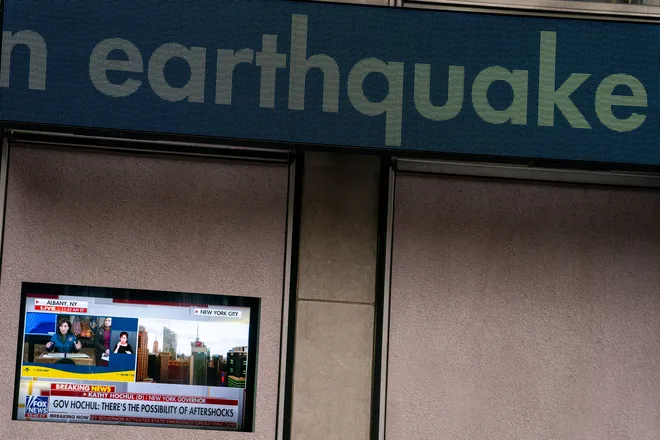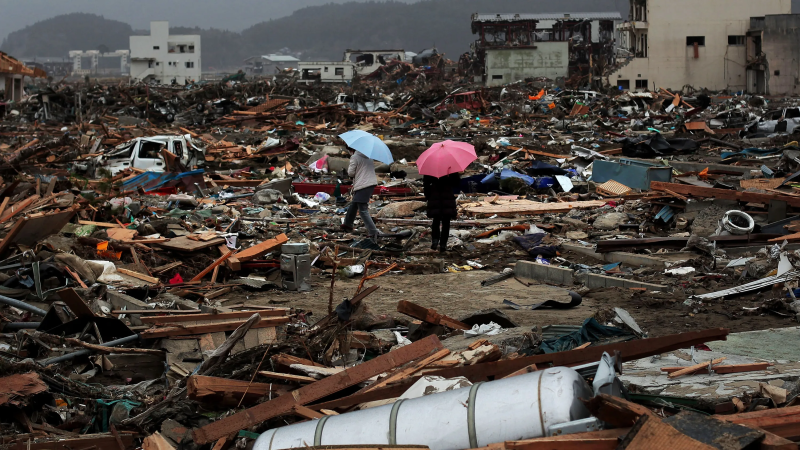Earthquakes happen all over the US, here's why they're different in the East
A 4.8 magnitude earthquake hit New Jersey and affected nearby states on Friday morning, leaving people on the East Coast and the ground trembling.
The quake was reported around 10:23 a.m. about 5 miles north of Whitehouse Station, New Jersey, according to the United States Geological Survey (USGS). The quake's epicenter was around 45 miles from New York City, causing New Yorkers to feel furniture and floors shake.
People from Norfolk, Virginia to Maine reported feeling the quake. Areas in Connecticut, Pennsylvania and Massachusetts all experienced the ground ripple.
An earthquake on the East Coast does not happen often, unlike on the West Coast where California annually "gets two or three earthquakes large enough to cause moderate damage to structures (magnitude 5.5 and higher)," the California Department of Conservation said.

Why the East Coast should still worry about earthquakes
Earthquakes are less frequent in the eastern part of the U.S. when compared to the West Coast, but they have occurred in every state east of the Mississippi River, according to the USGS. Some quakes were large enough to cause damage in nearly all eastern states, said the government agency that studies the country's landscape, natural resources and natural hazards.
"Since colonial times people in the New York - Philadelphia - Wilmington urban corridor have felt small earthquakes and suffered damage from infrequent larger ones," according to the USGS. "Moderately damaging earthquakes strike somewhere in the urban corridor roughly twice a century, and smaller earthquakes are felt roughly every 2-3 years."
'The surgeon sort of froze':Man getting vasectomy during earthquake Friday recounts experience
While not a common occurrence, earthquakes on the East Coast usually cause "higher-frequency shaking (fast back-and-forth motion) compared to similar events in the West," the USGS said.
Faster shaking normally makes shorter structures more susceptible to damage, while slower shaking typically affects taller structures, according to the agency.
"Many of the older structures in the East, such as buildings and bridges built before the 1970s, were not designed to endure earthquakes and therefore may not fare well," the USGS said.
The East Coast is progressing in retrofitting older buildings and constructing modern buildings that abide by newer design standards, according to the USGS. On the West Coast, older structures are more frequently retrofitted, and new structures are regularly "designed to withstand strong shaking," the agency said.
Why are there more earthquakes on the West Coast?
The western U.S. experiences more earthquakes because it "lies along the boundaries of major tectonic plates that make up the Earth's crust — the North American Plate and the ocean plates to the West," the USGS said.
"These plates are moving against each other, breaking up the crust along many faults like the San Andreas Fault," according to the agency. "Faults in the East are less active and lie entirely within the North American Plate."

Scientists have a harder time assessing earthquakes' frequency and magnitudes on the East Coast due to the geology of the eastern U.S. and the "relatively sparse history of earthquakes to study," the USGS said.
"Eastern earthquakes are more of a mystery because they do not take place at a plate boundary where most other earthquakes originate," the agency continued. "Scientists do not fully understand the state of stress within tectonic plates, and they are studying how stresses accumulate and evolve and how earthquakes are triggered."
Active faults harder to identify on the East Coast, USGS says
Another challenge scientists encounter is locating the active faults on the East Coast.
"Most faults have not had major earthquakes or movement in the past few million years, and the faults that are active may only have earthquakes every few thousand or tens of thousands of years," according to the USGS. "Any evidence of past earthquakes on the land’s surface in the eastern U.S. is often obscured by vegetation or is more subdued because of erosion."
The West Coast is the opposite because it has more active faults and several areas with sparse vegetation, so earthquakes can leave clear markings that help scientists determine history, size and effects, the government agency said.
How much does fracking affect earthquakes in the US?
North American fracking operations aren't known for causing high-magnitude earthquakes, and the ones that occur "have generally been small," the American Institute of Physics news service said.

The rise in quakes in the central U.S. is primarily due to the disposal of waste fluids, a byproduct of oil production, the USGS said.
"Wastewater disposal wells typically operate for longer durations and inject much more fluid than is injected during the hydraulic fracturing process, making them more likely to induce earthquakes," according to the government agency.
The biggest earthquake induced by fracking in the U.S. had a 4.0 magnitude and hit Texas in 2018, the USGS said.
Disclaimer: The copyright of this article belongs to the original author. Reposting this article is solely for the purpose of information dissemination and does not constitute any investment advice. If there is any infringement, please contact us immediately. We will make corrections or deletions as necessary. Thank you.




